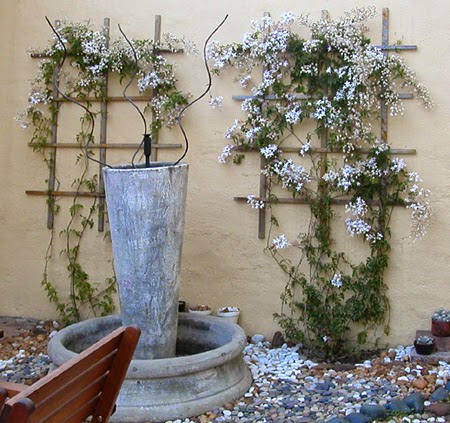Unlike normal gardeners, I do not grow my plumbago as a bush or a hedge, but as a climber. I read somewhere that plumbago plant, if given a chance, will cling onto a tree and grow upwards. In fact, I have seen the blue plumbago flowers peering high up from among tree leaves while driving in Northern suburbs of Johannesburg.
And since I have a bare wall (lots of bare walls, actually) in my garden and since one of them features now unused hooks (they were positioned there to hold my old washing line, but that’s another story), I decided that the combination was ideal for making my newly acquired plumbalo plant go up.
When I brought it home from the nursery, my plumbago plant did not look very promising. I had done what I promised to myself I’ll never do again: I had bought an inferior specimen, simply because it was the only one available and I was too lazy to make a trip to another nursery.
But my scruffy plumbago lived up to its reputation of surviving almost anything and soon started sprouting new growth. As the branches extended, I tied them up and up, until they reached respectable height. I find that now, three or four years later, they look quite decorative against the West facing wall of my garden.
It is worth repeating that the chalky, white residue that can appear on older plumbago leaves is not a pestilence, but a natural feature of the plant. You may read more about that in
this entry.
My plumbago then (about one year old)...
...and now:























